#Lake Onega
Photo
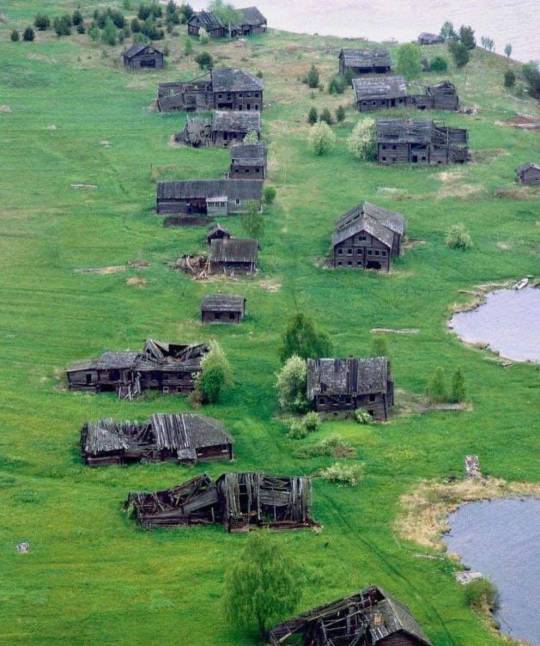
The village of Pegrema in the republic of Karelia, Russia.
It is situated on the bank of Lake Onega and dates back at least 500 years.
@ HistoryFeels
#art#photography#dronephotography#pegrema#karelia#russia#abandoned house#abandonedplaces#decay#lake onega#historyfeels#urbex supreme#urban exploration#urbexlife#urbexphotography#urbexplaces#urbexrussia
198 notes
·
View notes
Text
Friendship ornaments from the Stone Age
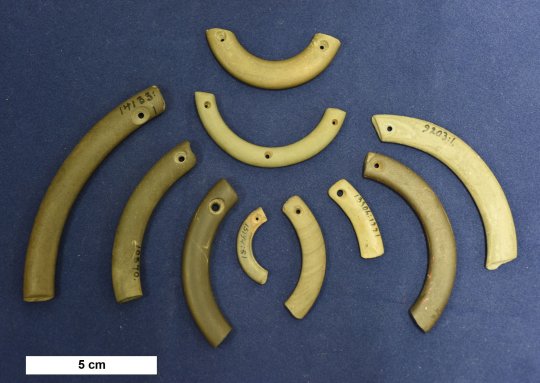
As most archaeological material is found in a fragmented state, the phenomenon has been considered a natural consequence of objects' having been long buried underground. However, according to Postdoctoral Researcher Marja Ahola from the University of Helsinki, not all objects have necessarily been broken by accident. Instead, it is possible some were fragmented on purpose as part of maintaining social relations, bartering or ritual activities.
The research now completed has demonstrated that a substantial number of ornaments have been found in extensive and central locations. As some of the ornaments originate in Lake Onega region and have been transported to Finland through a widespread exchange network, it is possible that they symbolize the connections established within the network. Read more.
181 notes
·
View notes
Text
Well, this isn't creepy at all. (sarcasm)
8 notes
·
View notes
Text

KIZHI ISLAND - RUSSIA
122 notes
·
View notes
Text
The Petrozavodsk Jellyfish
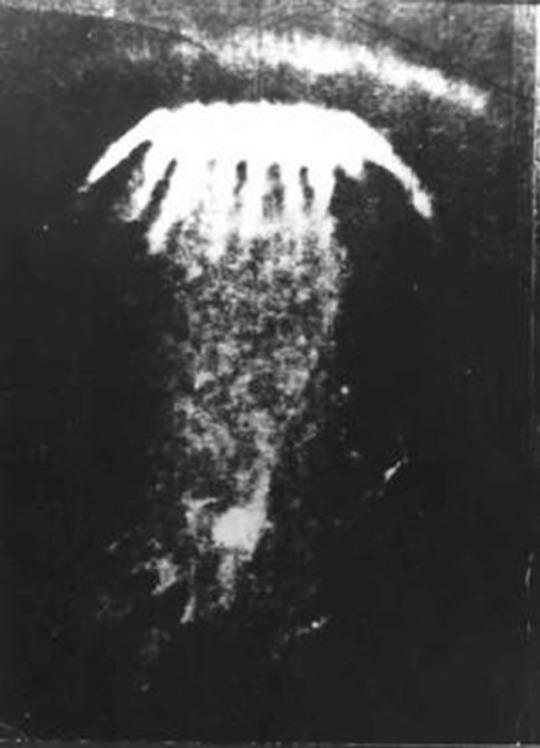
In 1977 a strange thing was seen over the skies of Petrozavodsk in the Soviet Union. TASS reporter Nikolai Milov described the object as "a huge star", that "flared up in the dark sky" at about 4am, "impulsively sending shafts of light to the Earth". According to Milov, "the star" spread out in the form of a jellyfish, "showering the city with a multitude of very fine rays which created an image of pouring rain". Milov further reported that "after some time the luminescent rays ceased" and "the jellyfish turned into a bright semicircle", which resumed its movement towards Onega Lake.
From Wikipedia
35 notes
·
View notes
Photo

hurch of Transfiguration, a visionary wooden wonder with an octagonal frame and 22 domes built in 1714 CE, without a single nail. Located on a remote island in Lake Onega.
Russian Orthodox church is part of an ensemble of storied wooden buildings known as Kizhi Pogost.
39 notes
·
View notes
Text
we could unite the gulf of finland with the white sea by building a series of canals, one through saint petersburg unto lake ladoga, then sort of widen and straighten out the svir river from ladoga into lake onega, and then another canal from north lake onega into the white sea through the arkangelsk oblast
now this would devastate life in and around the lakes from the introduction of salt water and also probably displace like a million people, but on the other hand it also wouldn't make any money so i think it's worth a shot
3 notes
·
View notes
Text
Whose history?
But what are the facts? Who has the greater claim to Anna, Yaroslav the Wise and Volodymyr the Great — Ukraine or Russia? And can Ukrainians and Russians really be considered to be the same people? The short answer is — no.
At its height in the mid 11th century, Kyivan Rus was the largest state in Europe and, because of its control of key trade routes, one of the richest. According to the Russian Primary Chronicle, the state was founded in 882, when Prince Oleg, the brother-in-law of Rurik, founder of the Rus royal dynasty, conquered Kyiv, made it his capital, and proclaimed it the “mother city of the Rus.”
Kyiv was at that time inhabited by Slavs who paid tribute to the Khazars, a confederation of mainly Turkic tribes who dominated the steppe land in what is now eastern Ukraine, eastern and southern Russia, the Caucuses, and parts of Central Asia as far as the Aral Sea in the east.
Under Oleg, the various Rus states united into a single political unit stretching from the Baltic Sea, Lake Ladoga and Lake Onega in the north, to the tip of Crimea (though not the whole of the peninsula) in the south. What is now southern and eastern Ukraine, though partly settled by Slavs, was mostly not part of Kyivan Rus, but was under the shifting and changing control of various tribes and invaders from the east.
After the reign of Yaroslav the Wise, from 1054, Kyiv Rus underwent gradual disintegration due to feuding between the rulers of its various constituent principalities over the succession to the title of Grand Prince of Kyiv.
Kyivan Rus was finally doomed by the invasion of the Mongols from the east in 1237–1240. The state broke apart into separate Rus principalities that paid tribute to the invaders for centuries to come.
Successor states
After a long period of domination by the Mongols and their Turkic successors the Golden Horde, control of the area that had been Kyivan Rus was by the beginning of the 16th century split between two large states. The Grand Duchy of Lithuania controlled most of what is now Ukraine and Belarus (apart from southeastern Ukraine and Crimea, which was under the Crimean Khanate), while the Grand Duchy of Muscovy occupied what is now the northeastern part of modern European Russia.
However, the grand dukes of Muscovy laid claim to all of the lands of the former Kyivan Rus, seeing themselves as direct successors to that ancient state. Under the successor state to Muscovy — the Tsardom of Russia — the area under Moscow’s control grew immensely, stretching through Siberia to the Far East. However, it still did not directly control most of the land that would one day be today’s Ukraine, or the “mother city of Russia” — Kyiv. That was still under Polish-Lithuanian control.
An uprising against Polish control in the east of Ukraine under Ukrainian Hetman Bogdan Khmelnytsky in the mid 17th century led the lands east of the Dnipro River and the city of Kyiv to become autonomous under the Cossack Zaporizhian Sich, at the price of Khmelnytsky’s oath of allegiance to the Russian Tsar. The south of Ukraine, from its modern western to eastern borders, remained under the control of the Ottoman Empire. After the Polish-Lithuanian Commonwealth lost a war against the Tsardom of Russia in 1667, the rest of eastern Ukraine, including Kyiv, was ceded to Russia by Poland.
After the Russian Empire was proclaimed in 1721 under Peter the Great, Moscow continued to expand its control westward and southward, defeating the Polish-Lithuanian Commonwealth, and by the end of the 19th century gaining control over most of what is now modern-day Ukraine. Following a brief struggle for independence when the Russian Empire ended in 1917, Ukraine (apart from its far western regions) was effectively absorbed by Russia in 1922 under the Soviet Union, as the Ukrainian Soviet Socialist Republic.
Modern Ukraine assumed its present shape after the Soviet annexation of western Ukraine in 1939 and the granting of Crimea to Ukraine in 1954 by Soviet leader Nikita Khrushchev. These were the borders assumed by Ukraine when it gained independence following the collapse of the Soviet Union in 1991.
Who were the Rus?
It is clear that the Russian state that emerged from the ashes of the Soviet Union, the Russian Federation, is a direct political successor of the Grand Duchy of Muscovy. But due to the destruction and fragmentation of Kyiv Rus by the Mongol invasion, modern Russia cannot be said to be the direct successor of Kyivan Rus, and its claims to be the direct inheritor of Kyivan Rus lands and history are spurious.
However, the same could be said for the modern Ukrainian state, which presently covers an area that has been occupied by numerous, tribes, peoples, nations, states and empires over the millennia, of whom the Kyivan Rus were by no means the first.
There is another twist to the tale: Oleg, the founder of Kyivan Rus, was the son of Rurik, who is generally thought to have been a Varangian — what we nowadays call a Viking.
The Rus, from which the countries Belarus and Russia derive their names, appear to have been a Scandinavian people who adopted Slavic culture and language after taking political control of the area. While this is disputed by Russian scholars, a similar case can be seen in western Europe, where Vikings settled in northern France and adopted French language and culture while lording it over the locals; they were the Normans, or Norsemen — Vikings. One of their leaders, William the Conqueror, invaded England in 1066 to bring a French-speaking nobility to power there.
So Putin’s propaganda narrative obscures the complex and uncertain history of the region, which intertwines Slavic, Scandinavian, Khazar, Turkic, and Mongol ruling families, states and empires, as well as shifting Ottoman, Lithuanian, Polish, Swedish and Russian imperial influences on the lands that centuries before were home to Yaroslav the Wise and his daughter Anna.
Putin’s claim that they or Volodymyr the Great are intrinsically Russian makes no more sense than to claim that the Norman kings of England are intrinsically British — it is a politically expedient claim, not a historically accurate one, of the type frequently used by past kings, emperors and dictators to justify claims to lands that are not their own.
4 notes
·
View notes
Photo
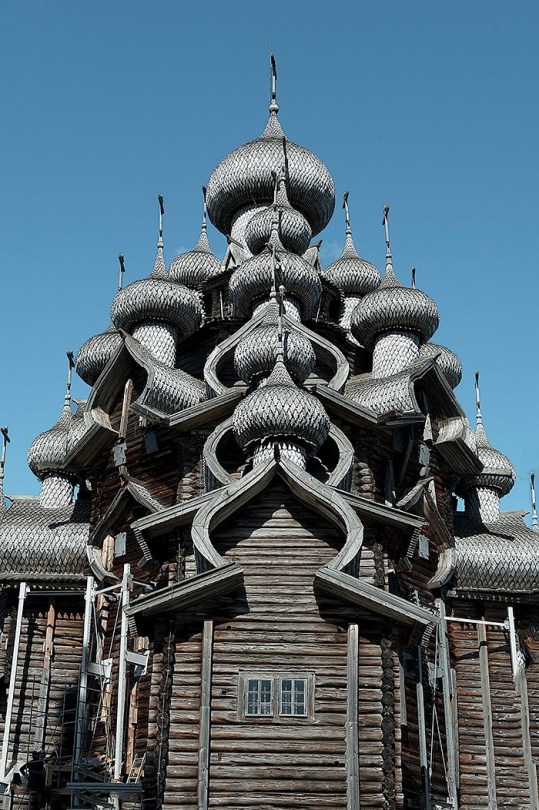
Photo: © Ko Hon Chiu Vincent
Kizhi Pogost
The pogost of Kizhi (i.e. the Kizhi enclosure) is located on one of the many islands in Lake Onega, in Karelia. Two 18th-century wooden churches, and an octagonal clock tower, also in wood and built in 1862, can be seen there. These unusual constructions, in which carpenters created a bold visionary architecture, perpetuate an ancient model of parish space and are in harmony with the surrounding landscape...continue reading_UNESCO World Heritage_Convention
9 notes
·
View notes
Text
Your smile is such that the Ganges and the Nile would renounce the title of ancient, holy river.
I would love your curves so admiringly that even the shadow would not touch your sunburnt hand.
I have neither dirhams, nor rupees, nor rubles, I have - the running of waves and the obedience of the forest in my soul,
but when you laugh, all treasures of the Caribbean seas have no meaning and no weight.
Yes, I heard the cathedrals of France, Sacré-Cœur, and in Italy I followed the footsteps of a virtuoso violin, kissed the ice of Lake Baikal and the shore of Lake Onega.
Nothing. Nothing I met more beautiful than that smile.
0 notes
Text

Where are Shungite gems usually found?
Shungite is primarily found in Russia, specifically in the Karelia region near Lake Onega. This unique gemstone is formed from carbonaceous sedimentary rocks, with its main constituent being carbon. The Shungite deposits in Karelia are among the largest and most significant in the world, with extensive reserves. Additionally, smaller deposits have been discovered in other parts of Russia, such as in the Tver region. Shungite's distinctive properties, including its high carbon content and unique molecular structure, have led to its widespread use in various applications, from water purification to metaphysical practices, making it a sought-after gemstone globally.
0 notes
Text
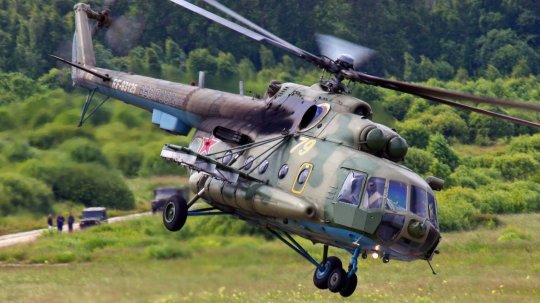
Mi-8 helicopter "disappeared from the radar" in the marshes According to RuZZian media, a Mi-8 helicopter has disappeared from radar over Lake Onega in Karelia.
There were 3 people on board, and the search for the aircraft is ongoing.
The aircraft belongs to the RuZZian Emergencies Ministry and was flying from Petrozavodsk to Vytegra, Vologda Oblast.
0 notes
Video
youtube
Discover the Hidden Stories Behind 10 World Famous Domes
Have you ever wondered about the stories behind the world's most iconic domes? From the Hagia Sophia's awe-inspiring grandeur to the Taj Mahal's ethereal beauty, these architectural marvels hold secrets waiting to be unveiled. Join us on a captivating journey as we explore the hidden narratives behind 10 world-renowned domes.
Journey to the Hagia Sophia, a mesmerizing Byzantine masterpiece that has captivated the world for centuries. Its immense dome, soaring 180 feet above the ground, stands as a testament to human ingenuity and architectural prowess.
Pantheon, Rome, Italy:
Travel back in time to ancient Rome and marvel at the Pantheon, a remarkable architectural feat that has baffled architects for centuries. Its unreinforced concrete dome, the largest in the world, showcases the engineering brilliance of the Roman era.
Taj Mahal, Agra, India:
Immerse yourself in the enchanting Taj Mahal, a monument of love and loss that has captivated hearts worldwide. Its delicate marble inlays, intricate carvings, and harmonious proportions embody the pinnacle of Mughal architectural artistry.
Dome of the Rock, Jerusalem, Israel:
Venture into the Dome of the Rock, a sacred landmark that holds immense significance in Islamic tradition. Its glistening gold façade, adorned with exquisite calligraphy, reflects the grandeur of Islamic art and architecture.
Florence Cathedral, Florence, Italy:
Ascend to the heights of Florence Cathedral and witness the engineering marvel of its massive dome. Designed by Filippo Brunelleschi, this architectural masterpiece marked a turning point in Renaissance architecture, inspiring generations of architects to come.
Great Mosque of Córdoba, Córdoba, Spain:
Lose yourself in the mesmerizing labyrinth of the Great Mosque of Córdoba, a harmonious blend of Roman, Visigothic, and Islamic architectural styles. Its vast interior, adorned with over 850 columns and horseshoe arches, creates an enchanting ambiance.
Saint Basil's Cathedral, Moscow, Russia:
Gaze upon the whimsical Saint Basil's Cathedral, a playful masterpiece of Russian Orthodox architecture. Its vibrant colors, intricate onion domes, and whimsical asymmetry have become synonymous with Moscow's skyline.
Jama Masjid, Delhi, India:
Stand in awe before the grandeur of Jama Masjid, a magnificent reflection of Mughal architectural splendor. Its imposing red sandstone façade, flanked by towering minarets, creates an awe-inspiring presence, while its vast courtyard and serene white marble interior provide a tranquil space for reflection.
Chapel of the Transfiguration, Kizhi Pogost, Russia:
Journey to the shores of Lake Onega and marvel at the Chapel of the Transfiguration, a wooden wonder that defies gravity and time. Its intricate wooden structure, built without nails, showcases the exceptional craftsmanship of Russian carpenters.
Seidenfaden Synagogue, Bukhara, Uzbekistan:
Venture into the heart of Bukhara and discover the Seidenfaden Synagogue, a unique architectural gem that blends Jewish and Bukharan traditions. Its intricate brickwork and majestic dome reflect the harmonious coexistence of cultures in this ancient city.
Embark on this captivating journey and uncover the hidden stories behind these architectural marvels. Each dome whispers tales of history, culture, and human endeavor, leaving you with a newfound appreciation for the ingenuity and artistry that have shaped our world.
0 notes
Video
View of Lake Onega from the tract Devil's Chair
Olympus OM-2n Vivitar Series 1 35-85 mm f/2.8 Ilford PAN400
#analog#film 135#Olympus OM-2n#Vivitar Series 1 35-85 mm f/2.8#ilford pan 400#monochrome#b/w#filmnotdead#filmphotography#ishootfilm#Karelia#Petrozavodsk#Russia#аналог#плёнка#монохром#ч/б#Петрозаводск#Карелия#flickr
0 notes
Text
Here are the top 20 places to visit in Russia:
1. Moscow - The capital city, known for Red Square, Saint Basil's Cathedral, Kremlin and rich history. Moscow has some of the most iconic landmarks in the country.
2. Saint Petersburg - Russia's cultural capital, full of museums, historical buildings and monuments like the Winter Palace, Hermitage Museum, Peterhof Palace and St. Isaac's Cathedral. It is also known as the "Venice of the North".
3. Golden Ring - A ring of historic cities northeast of Moscow, including Vladimir, Suzdal, Kostroma, Pereslavl-Zalessky, Rostov Velikiy, Yaroslavl, Kostroma, and Ivanovo. Full of ancient churches, monasteries and historic sites.
4. Lake Baikal - The largest freshwater lake in the world, surrounded by mountains. A natural wonder and home to numerous animals and plants. Great for hiking, camping, boating and outdoor activities.
5. Kamchatka Peninsula - A remote volcanic area in the Russian Far East, great for wildlife viewing, hiking and other adventure activities. Home to massive volcanoes, geysers and hot springs.
6. Ural Mountains - The border between Europe and Asia, filled with scenic beauty like canyons, peaks, waterfalls and rock formations. Popular for hiking, camping, rafting and mountain climbing.
7. Sochi - A popular Black Sea resort town, hosting the 2014 Winter Olympics. Miles of beaches, Palm tree-lined streets, historic sites and subtropical climate.
8. Irkutsk - A city near Lake Baikal in Eastern Siberia, full of cobbled streets, wooden houses and historic churches. Starting point for hiking and trips to Lake Baikal.
9. Kazan - The capital of Tatarstan, a mix of Russian and Tatar cultures. Home to many mosques, churches, museums and the Kazan Kremlin.
10. Yekaterinburg - A major city in the Ural Mountains, known for being the place where Czar Nicholas II and his family were executed. Full of museums, historical sites and a vibrant cultural scene.
11. Karelia - A region in Northern Russia bordering Finland, covered in lakes, forests and marble rock formations. Great for boating, hiking, fishing and other outdoor activities.
12. Veliky Novgorod - An ancient city with a history spanning over 1000 years. Full of historic churches like St. Sophia Cathedral and Yuriev Monastery, as well as a well-preserved kremlin.
13. Vladivostok - A major port city on the Pacific coast, with beaches, seafood, scenic ocean vistas and proximity to Chinese and North Korean borders. Starting point for cruises.
14. Kizhi Island - An island on Lake Onega with an open-air museum of iconic Russian wooden architecture like the 22-dome Transfiguration Church. Accessible only by boat.
15. Suzdal - A historic town in the Golden Ring with medieval monasteries, churches, museums and traditional wooden architecture. Like stepping back in time.
16. Kaliningrad - A Russian exclave on the Baltic Sea, separated from the rest of Russia. Full of Prussian-style architecture, castles, beaches and UNESCO World Heritage sites.
17. Murmansk - A city in the Arctic circle, ideal for viewing the Northern Lights. Surrounded by tundra and located on the Kola Peninsula. Gateway to Arctic exploration.
18. Astrakhan - A city in Southern Russia on the Caspian Sea. Filled with historical sites, Buddhist temples, mosques and churches. Starting point for exploration of the Volga Delta.
19. Krasnoyarsk - A Siberian city on the Yenisei River, surrounded by forests, hydroelectric dams and nature reserves. Good for hiking, boating and outdoor activities.
20. Nizhny Novgorod - A historic city in Western Russia filled with medieval kremlins, monasteries, museums and Soviet-era architecture along the Volga River. Great for cultural exploration.

1 note
·
View note
Link
Mending precious stones are for the most part utilized as a type of corresponding and elective medication. Corresponding medication is a training that is utilized in blend with standard treatments, while elective medication is utilized rather than it.
There are many sorts of recuperating gems, yet some are especially one of a kind. One model is shungite, an interesting stone that is said to neutralize poisons, free revolutionaries, and unsafe microorganisms. There are additionally guarantees that it might assist with safeguarding you from electromagnetic field openness.
We should investigate shungite and its purposes. We'll likewise investigate what the science says regarding this stone, in addition to how it's generally utilized.
Shungite is an interesting dark stone made of up to 99 percent carbon. It's predominantly found in Shunga, a town in Karelia, Russia.
The stone has a one of a kind sythesis. It contains fullerenes, or three dimensional round particles made of 60 carbon iotas. These particles are empty and some of the time called buckyballs.
Alongside fullerenes, shungite comprises of essentially every one of the minerals on the occasional table.
0 notes
